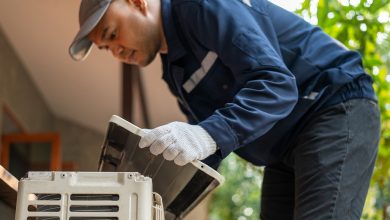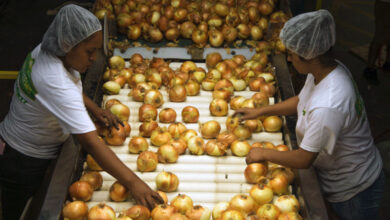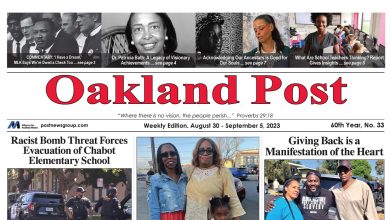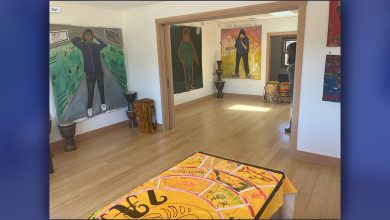
UC Berkeley policy analyst from the Othering and Belonging Institute shares recommendations to protect people displaced from the climate crisis.
By Ivan Natividad
UC Berkeley News
As world leaders presented their plans to combat rising global temperatures at the annual United Nations Climate Change Conference (COP 28) in Dubai from Nov. 30-Dec. 13, 2023, discussions are centered on how countries can cut greenhouse gas emissions and mitigate a dire environmental future.
But a UC Berkeley researcher says that future is already here for millions of people displaced by the climate crisis. And those climate refugees are predominantly from formerly colonized countries that are not responsible, in large part, for the factors that exacerbate climate change.
Those nations — in the global south regions of Africa, Latin America, the Caribbean and much of Asia and Oceania — also lack the wealth and infrastructure to withstand intensifying natural disasters, rising sea levels and the collapse of industries dependent on stable climates, according to a recent Berkeley report.
“There are many examples of how global south countries face the brunt of a crisis they did not produce, due to the activities of countries and industries in the global north,” says report co-author Hossein Ayazi, a senior policy analyst at UC Berkeley’s Othering and Belonging Institute. “So, we want to help protect the most marginalized — climate-induced displaced persons — while targeting the sources of their marginalization.”
That is why the institute’s Global Justice Program recently launched an interactive database that helps both policymakers and impacted communities explore global data on climate-induced displacement. The report also offers strategies to ensure the protection of people displaced by the climate crisis, and climate resilience for them moving forward.
Ayazi said the research shows that sea levels are expected to rise drastically in the coming decades, which will impact nearly 40% of the world’s population that lives in coastal areas. And over 75% of all coastal populations — 90% of the world’s poor rural coastal areas — live in the global south.
Berkeley News spoke with Ayazi about what’s causing climate change displacement and what needs to happen to protect climate refugees and make their communities more resilient.
Berkeley News: Your research unpacks why people in the global south are more vulnerable to being displaced from the impacts of the climate crisis. What are some of the economic dimensions of this vulnerability?
Hossein Ayazi: Many countries in the global south have a relatively large percentage of their gross domestic product (GDP) derived from agriculture, forestry, and fishing — industries that are by nature more vulnerable to a changing climate.
In Ethiopia, for example, agriculture comprises almost 40% of its total GDP. That sector also employs over 80% of its population. So as these countries experience climate extremes — droughts, floods, increased temperatures and so on— their economies are impacted on a deep level.
A defining feature of countries in the global south is that their economies have been organized by, and to the benefit of, the global north — wealthier and powerful nations in North America and Europe. This means agricultural production that’s largely export-oriented, and not diversified, makes these countries especially inflexible and vulnerable to climate impacts.
Berkeley News: What other significant economic or financial factors cause or worsen climate-induced displacement?
Hossein Ayazi: Global south countries have a high external debt burden, with surcharges making things worse. In fact, global south debt payments in 2023 reached their highest level in 25 years.
This high debt burden means a poor sovereign credit rating, and a lack of fiscal space to invest in climate-resilient infrastructure and economies that can adequately respond to disasters. This is true at the individual and household level: When disaster strikes, it’s hard for people to manage when they are struggling financially.
Protecting climate refugees and affording people the right to stay in their communities means addressing such issues.
Berkeley News: While the focus of your data is on the global south, when you talk about climate displacement in this way it seems like it can happen anywhere — even in the United States.
Hossein Ayazi: It certainly can. Consider Hurricane Katrina in 2005. Residential segregation and decades of disinvestment in New Orleans’ levee infrastructure meant that when the storm hit, it would be the city’s poorer Black residents who would be displaced or lose their lives.
In the wildfires in Maui this year, we saw the inequalities in those communities exacerbated. Tourists had the means to reach safety and secure a place to stay, while many Native Hawaiians struggled to flee, save their homes, or recover afterward.
The climate crisis is a global phenomenon, but its impacts are not evenly experienced.
Berkeley News: Your research reveals that industries using extreme amounts of nonrenewable energy sources mostly come from wealthier countries in the global north. How do those industries affect the surrounding communities they inhabit?
Hossein Ayazi: Globally, we have come to be dependent on extractive, exploitative industries that might provide for some, but collectively harm us all, and certainly harm the people in closest proximity to them.
These industries are usually placed in marginalized communities in the global north — and in countries across the global south — and, rife with health and environmental impacts, they become mainstays of the broader economy.
Berkeley News: What is an example of this locally?
Hossein Ayazi: We can look to Richmond, California, and the Chevron oil refinery located there. Nearly 24% of the city’s general fund comes from the refinery, which also provides regional employment.
So, the question is: How do communities and countries become less dependent on these extractive industries that harm them, and us? How are these harms — past and present — addressed?
That’s the point of this work: Protecting peoples most harmed by the climate crisis, targeting the sources of the climate crisis, and building communities and economies that are just, sustainable and resilient against the climate crisis.
Berkeley News: What do world leaders need to do to make this vision a reality?
Hossein Ayazi: World leaders need to recognize the rights of people displaced by the climate crisis and across international borders. They also need to act upon demands for the transformational changes needed to materialize inclusive, just, and climate-resilient communities.
These demands entail ending the exploitation of land, resources and labor, and demilitarizing borders, among other key climate justice demands.
Berkeley News: What type of policy does your research recommend?
Hossein Ayazi: What we conceptualize as the “Right to Stay” is not only the right for climate-displaced people to safely resettle when their lives are uprooted. It is also the right to stay in place amidst the climate crisis, and against the extractive and exploitative structures that are forcing them to move.
To be able to aid the transition to climate-resilient societies and regenerative economies globally — while protecting the world’s most marginalized and exploited people and communities — a Right to Stay policy platform entails:
- Legal rights for all peoples displaced by the climate crisis, within and across national borders
- Climate reparations to countries in the global south, whose vulnerability to the climate crisis follows centuries of global north extractive and exploitative political and economic activity
- Just transitions that democratize, decentralize, and diversify economic activity and (re)distribute resources and power
Berkeley News: Why should the general public care about people displaced by climate change?
Hossein Ayazi: To address the condition of climate displacement is to come at the work of climate justice from multiple angles — from worker protections to migrant rights to prison abolition to reparations for the harms of colonialism and slavery to food sovereignty, and so on.
These struggles for justice and self-determination are all connected, especially under the climate crisis.
It’s that work that we’re trying to hold together through this database, and through the reports and recommendations that accompany it. Our work aims to map and strengthen this global constellation of efforts by helping the public and policymakers understand the structural nature of climate displacement.
Berkeley News: How do we build climate resilience in our own communities?
Hossein Ayazi: It begins with organizing ourselves as renters, as students, as workers, as debtors and so on. It’s about all the ways that we can collectively determine and respond to the sources of hardship in our life, in ways that are connected to these other issues.
And it must be through a hopeful message, a message that we’re going to co-create the future that we all deserve to live in.




